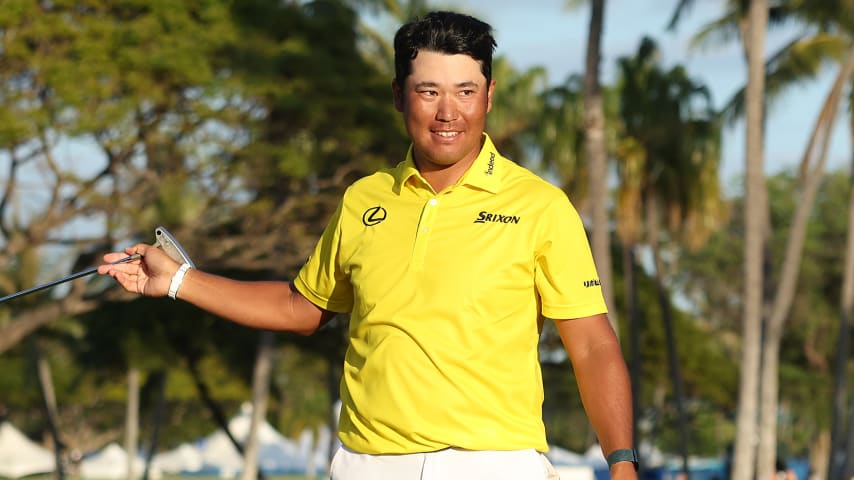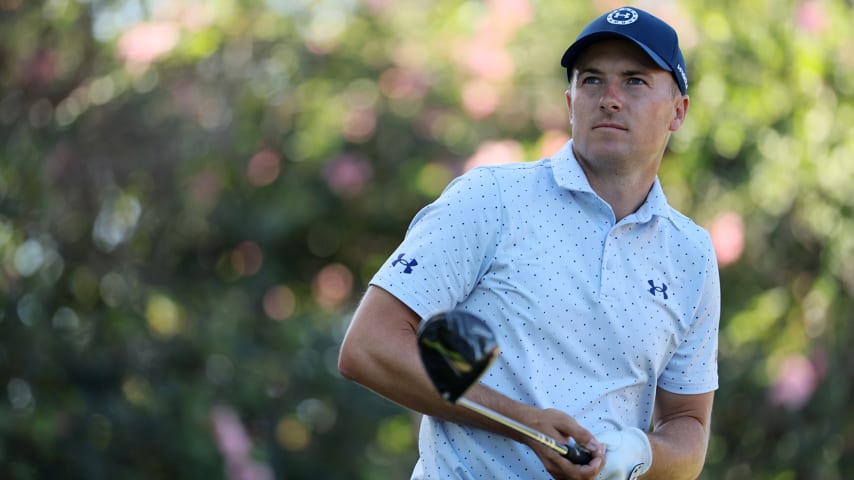Two eagles, two wins at Waialae by giants of Japanese golf
4 Min Read

Isao Aoki holed out to make history at the 1983 Sony Open; Hideki Matsuyama updated the legend with a 3 of his own last year
Written by Cameron Morfit
Isao Aoki holed out to make history at the 1983 Sony Open; Hideki Matsuyama updated the legend with a 3 of his own last year
HONOLULU – The eagles couldn’t have been more different, but the hole, Waialae Country Club’s par-5 18th, and the result, a victory by a Japanese trailblazer, were the same. The echoes of each will resonate loudly this week, at the 25th edition of this tournament sponsored by the Japanese electronics giant Sony.
In a playoff with Russell Henley a year ago, Hideki Matsuyama, in a yellow shirt as bright as the blinding sun, strafed a 3-wood from 276 yards, the crowd roaring as the ball hit the green and cozied up to 3 feet from the pin. Matsuyama, who months earlier had become the first Japanese man to win a major, tapped in for his eighth PGA TOUR title.

Hideki Matsuyama’s amazing 3-wood leads to winning eagle at the Sony Open
And 40 years ago, Isao Aoki, in tan slacks and a pink-and-brown striped shirt, hit a 128-yard pitching wedge out of the left rough and watched as it bounced once and fell in the cup for a winning 3, stunning Jack Renner and everyone else.
“A gift from God,” Aoki, now 80 and the head of the Japan Golf Tour, said in an extensive interview at the ZOZO CHAMPIONSHIP last fall. Aoki also is a World Golf Hall of Famer whose career included more than 50 wins in Japan.
The 1983 Sony Open in Hawaii was his lone triumph on the PGA TOUR. It was a historic victory, making him the first Japanese player to win on TOUR and paving the way for Matsuyama and others to follow. Their legacy and influence will grow this week with the presence of not just Matsuyama but also six others, including former world No. 1 amateurs Keita Nakajima and Taiga Semikawa, plus Japan Golf Tour money list winner Kazuki Higa.
They point back to the grandfatherly Aoki-san as the man who started it all.
“To win here where the first Japanese player in Isao Aoki won on the PGA TOUR is extra special,” Matsuyama said last year. At the ZOZO, Aoki called the remark “extremely touching.”
Shigeki Maruyama, a three-time TOUR winner and twice a member of the International Presidents Cup Team (5-0-0 in 1998), was even more direct about Aoki’s impact: “I was able to make it to the PGA TOUR because I saw Aoki-san win the Hawaiian Open.”
Added Nakajima, who tied for 12th at the ZOZO last fall, “Every time I see Mr. Aoki, I always tell him I’ll try my best. He says, ‘Don’t try your best, just play your own golf.’”
Aoki takes this in with his ever-present smile. He called his victory at Waialae Country Club “a turning point in my life,” and it was, but it was also a turning point in so many others’ too. He’s not only an organizing force for the Japan Golf Tour, but he’s also a sounding board for today’s young players, especially those testing the waters in America.
“From the skills standpoint, they are on par with the American or European players,” he said. “It will come down their mindset. … (Another) key factor is timing – a few things here and there would determine the outcome of winning or losing.”
Today’s power game is different from the one played in his day, Aoki added. He was a short-game specialist with a toe-up, “pop” putting stroke that worked remarkably well. In addition to his victory in Hawaii and dozens in Japan, he also won the 1978 World Match Play, 1983 European Open (Seve Ballesteros and Nick Faldo finished second) and 1989 Coca-Cola Classic in Australia. He also was a nine-time winner on PGA TOUR Champions.
He was curious about the level of play in America and began testing his game here in the mid-1970s. He finished second to Jack Nicklaus at the 1980 U.S. Open. Aoki’s masterstroke at Waialae in 1983, which he has called the best swing of his life, led to a friendship with the vanquished Renner, who went on to win the Sony the following year.
“I didn’t realize that Jack was so young,” Aoki said. “He is about 15 years younger than myself. He grew up idolizing Ben Hogan. He is a reserved guy. Two weeks after winning the Sony Open, I happened to see him when he joked that he didn’t want to see my face!”
Similarly, when Henley ran into Matsuyama at the WM Phoenix Open, a few weeks after the Sony, Henley took Matsuyama’s 3-wood out of his bag and made as if to break it over his knee.
“I really like Hideki,” Henley said at the Sony on Tuesday. “I've always enjoyed playing with Hideki, and I think his golf game is just beautiful to watch.”
It is, and nothing, save for an albatross, is more beautiful than an eagle – especially the two that stand as pillars of Japanese excellence on the PGA TOUR.





